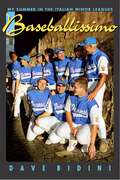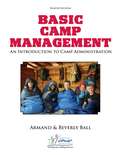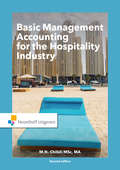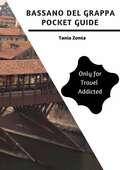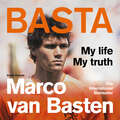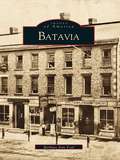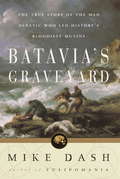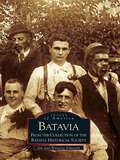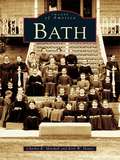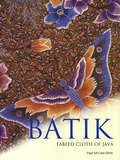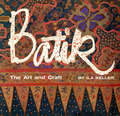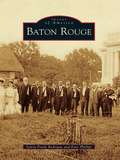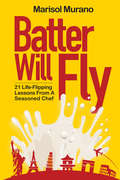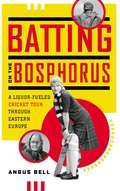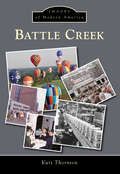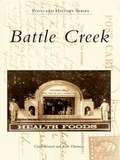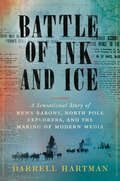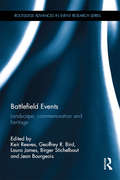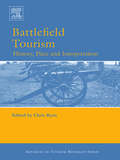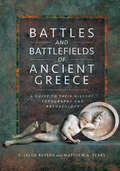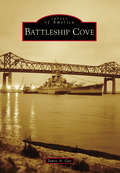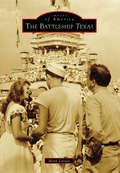- Table View
- List View
Baseballissimo
by Dave BidiniIn the spring of 2002, Dave Bidini set off for Nettuno, Italy, with his wife, Janet, and their two small children, in search of his favourite summer game, baseball. Nettuno was his destination because this town, south of Rome, has been the baseball capital of Italy since 1944, when the game was introduced by the American GIs who liberated the region. Bidini wanted to spend time in a town where everyone is as nuts about the game as he is, and in Nettuno, they love the game so much that they hand out baseball gloves and bats to children taking their first communion. For six months Bidini followed the fortunes of the Serie B Peones, Nettunese to the core. At the same time he was also learning about his own heritage, having spent his youth vigorously ignoring his Italianness. The result of his summer in Italy is vintage Bidini: a funny, perceptive, and engrossing book that takes readers far beyond the professional sport to the game that people around the world love to play.
Basic Camp Management: An Introduction to Camp Administration
by Armand Ball Beverly BallManage your camp more effectively with the leading textbook for camp administration courses everywhere. The newly revised 8th edition of Basic Camp Management: An Introduction to Camp Administration provides overviews of 19 key areas that define successful camp operations, including the latest in outcomes and programming research, staff hiring and training, and business and technology, all of which are supported by nationally recognized standards from the American Camp Association.
Basic Management Accounting for the Hospitality Industry (Routledge-Noordhoff International Editions)
by Michael ChibiliBasic Management Accounting for the Hospitality Industry uses a step by step approach to enable students to independently master the field. This second edition contains many new themes and developments, including: the essence of the International Financial Reporting Standards (IFRS) integration of the changes caused by the evolution of the Uniform System of Accounts for the Lodging Industry (USALI) the extension of price elasticity of demand, and addition of income and cross elasticities the addition of break-even time (BET) as an additional method of analysing capital investments Up-to-date and comprehensive coverage, this textbook is essential reading for hospitality management students. Additional study and teaching materials can be found on www.hospitalitymanagement.noordhoff.nl
Bassano del Grappa Pocket Guide
by Tania ZontaThe Bassano del Grappa Pocket Guide will help you discover the city, with its history and fine living. You will be able to organize your personal itinerary thanks to the following information found in the book: -Useful information for an all-round experience; -Localized route with short descriptions of museums and monuments to learn about its history; -Rooms and restaurants in the city centre; -Information about what to visit in the surroundings; -The people who made the city famous; -The role of Bassano in the First and Second World War.
Basta: My Life, My Truth
by Marco Van BastenTriple European Footballer of the Year. Once World Footballer of the Year. European Champion two UEFA Super Cups, European Champion with the Dutch National Team in 1988 and numerous national championships with both Ajax and AC Milan. Marco van Basten is known as one of the greatest footballers of all time, but his personal life has always remained somewhat of a mystery, until now. <p><p> Basta is the raw, honest, but above all gripping autobiography of Marco van Basten.It's the unfiltered story of his rise to fame, from being under the wing of Cruyff and experiencing life as an Ajax player to being propelled into the spotlight following Euros '88 - and scoring the greatest goal ever to win a major final - and playing for AC Milan at the peak of Italian football's popularity. <p>But despite countless successes, Marco van Basten experienced many low points, including losing a childhood friend, battling with pain after his numerous fluffed operations, and ultimately coming to terms with life after playing football. Basta is his story.
Basta: My Life, My Truth – The International Bestseller
by Marco van Basten***'This account is often poetic and sometimes haunting.' - FourFourTwoTriple European Footballer of the Year. Once World Footballer of the Year. European Champion two UEFA Super Cups, European Champion with the Dutch National Team in 1988 and numerous national championships with both Ajax and AC Milan. Marco van Basten is known as one of the greatest footballers of all time, but his personal life has always remained somewhat of a mystery, until now.Basta is the raw, honest, but above all gripping autobiography of Marco van Basten.It's the unfiltered story of his rise to fame, from being under the wing of Cruyff and experiencing life as an Ajax player to being propelled into the spotlight following Euros '88 - and scoring the greatest goal ever to win a major final - and playing for AC Milan at the peak of Italian football's popularity.But despite countless successes, Marco van Basten experienced many low points, including losing a childhood friend, battling with pain after his numerous fluffed operations, and ultimately coming to terms with life after playing football.Basta is his story.
Basta: My Life, My Truth – The International Bestseller
by Marco van Basten***'This account is often poetic and sometimes haunting.' - FourFourTwoTriple European Footballer of the Year. Once World Footballer of the Year. European Champion two UEFA Super Cups, European Champion with the Dutch National Team in 1988 and numerous national championships with both Ajax and AC Milan. Marco van Basten is known as one of the greatest footballers of all time, but his personal life has always remained somewhat of a mystery, until now.Basta is the raw, honest, but above all gripping autobiography of Marco van Basten.It's the unfiltered story of his rise to fame, from being under the wing of Cruyff and experiencing life as an Ajax player to being propelled into the spotlight following Euros '88 - and scoring the greatest goal ever to win a major final - and playing for AC Milan at the peak of Italian football's popularity.But despite countless successes, Marco van Basten experienced many low points, including losing a childhood friend, battling with pain after his numerous fluffed operations, and ultimately coming to terms with life after playing football.Basta is his story.
Batavia
by Barbara Ann ToalLocated midway between Buffalo and Rochester, Batavia was an important area hundreds of years before Columbus arrived in America. Two long Indian trails converged here at what is known as the Great Meeting Place: one leading from Lake Erie to the Hudson River and the other from Lake Erie to the Susquehanna River. With more than 200 stunning images, Batavia recounts the history of the area from the early settlement at the Great Bend of the Ton-ne-wan-ta to the vibrant city that Batavia is today. The book tells the story of the Holland Land Company and its connection to the American Revolution; the railroads and their importance to theindustrial growth of the city; and the urban renewal of the later 1900s, as well as the more current architectural restoration projects.
Batavia's Graveyard: The True Story of the Mad Heretic Who Led History's Bloodiest Meeting
by Mike DashFrom the bestselling author of Tulipomania comes Batavia’s Graveyard, the spellbinding true story of mutiny, shipwreck, murder, and survival.It was the autumn of 1628, and the Batavia, the Dutch East India Company’s flagship, was loaded with a king’s ransom in gold, silver, and gems for her maiden voyage to Java. The Batavia was the pride of the Company’s fleet, a tangible symbol of the world’s richest and most powerful commercial monopoly. She set sail with great fanfare, but the Batavia and her gold would never reach Java, for the Company had also sent along a new employee, Jeronimus Corneliszoon, a bankrupt and disgraced man who possessed disarming charisma and dangerously heretical ideas. With the help of a few disgruntled sailors, Jeronimus soon sparked a mutiny that seemed certain to succeed—but for one unplanned event: In the dark morning hours of June 3, the Batavia smashed through a coral reef and ran aground on a small chain of islands near Australia. The commander of the ship and the skipper evaded the mutineers by escaping in a tiny lifeboat and setting a course for Java—some 1,800 miles north—to summon help. Nearly all of the passengers survived the wreck and found themselves trapped on a bleak coral island without water, food, or shelter. Leaderless, unarmed, and unaware of Jeronimus’s treachery, they were at the mercy of the mutineers.Jeronimus took control almost immediately, preaching his own twisted version of heresy he’d learned in Holland’s secret Anabaptist societies. More than 100 people died at his command in the months that followed. Before long, an all-out war erupted between the mutineers and a small group of soldiers led by Wiebbe Hayes, the one man brave enough to challenge Jeronimus’s band of butchers.Unluckily for the mutineers, the Batavia’s commander had raised the alarm in Java, and at the height of the violence the Company’s gunboats sailed over the horizon. Jeronimus and his mutineers would meet an end almost as gruesome as that of the innocents whose blood had run on the small island they called Batavia’s Graveyard.Impeccably researched and beautifully written, Batavia’s Graveyard is the next classic of narrative nonfiction, the book that secures Mike Dash’s place as one of the finest writers of the genre.
Batavia: From the Collection of the Batavia Historical Society
by Jim Edwards Wynette EdwardsSituated directly west of Chicago is Batavia, Illinois, world famous as the home of Fermilab, a center of nuclear research that hosts scientists from all over the world. Few people realize that this city has had a long history of leadership in the development of energy resources. In Batavia we endeavor to explore that history, with a look at power from windmills to power plants. Also part of the fabric of Batavia's past are the community leaders who transformed a river village (settled in the 1830s) into a vibrant and vital modern city. You will view a 1910 photographic essay capturing Batavians on the streets of their city, discover a unique early high-tech company that produced beauty and dietary consumer products in the 1930s, and experience an architectural walking tour (complete with a map) of old Batavia and her famous citizens. And to complete our journey through time, you will learn how Mary Todd, wife of Abraham Lincoln, came to live in Batavia.
Bath
by Kirk W. House Charles R. MitchellBath is the home of America's oldest county fair. The commmunity was planned as western New York's "Queen City," a great metropolis, with broad tree-lined boulevards and spacious squares. Airplanes and ladders were made here, and four railroads-from the "champagne train" to the "kick and push" line-ran through town. Today, Bath remains a town of wide avenues, well-kept greens, dramatic cliffs, busy dairies, and the famous fair that has been held every year for nearly two centuries. Bath serves as the welcoming, wide-open back door to the Finger Lakes.
Bath and Its Neighbors
by Carol K. HeckmanAt the heart of seven converging roads, Bath is the hub of Northampton County. Consisting of a tannery, a gristmill, two stores, and five dwellings in 1816, Bath evolved into a bustling town with over 175 shops, tradesmen, and professionals. Featured among the more than 200 historic photographs are a rare 1700s map of the Scotch-Irish settlement, Moses George Cigar Factory workers, the shops on the West Main Street Bridge, devastation from the 1945 flood, workers picking celery in the fields, and Miss Bath 1962. Meander through Bath and Its Neighbors and feel the tenacity of its people, the exuberance of their celebrations, and the simplicity of a time not so long ago.
Batik
by Brian Brake Inger Mccabe ElliotBatik: Fabled Cloth of Java is a sumptuous, classic book, richly illustrated with color plates of the finest antique and contemporary batik from thirty museums and private collections around the world. It includes historical photographs, etchings, engravings, maps and photographs of modern Java.
Batik: The Art and Craft
by Ila KellerHere in this volume the author has not only given a comprehensive and fascinating account of the origins and history of batik, with examples of techniques and design, but also includes a complete "How-To-Do-It" section on modern methods of creating batik. The text is lucid and easy to follow, and the simple step-by-step format will enable the art enthusiast to investigate this rewarding and creative medium. Sample batiks by modern artists, show what can be done with craft, skill, and imagination. The author takes the reader through all aspects of making a batik, from a simple dipping, or tie-dying, to sectional dyeing, and the more intricate five or six-color patterns. Basic materials, fabric mixtures, wax temperatures etc. are discussed fully, and more important, the practical problems often encountered by a beginner are thoughtfully explained. Here is a book of batik literally giving you the 'tricks of the trade'.
Baton Rouge
by Sylvia Frank Rodrigue Faye PhillipsIn 1699, on a high bluff along the Mississippi River, explorer Pierre Le Moyne, Sieur d'Iberville, found the fabled "Red Stick," a post that marked the line between two Native American nations and gave Baton Rouge, Louisiana, its name. This book chronicles 150 years of the daily activities of Baton Rouge's residents through images of the city's growth and development; life during the Civil War, floods, hurricanes, and economic depressions; and people working, playing, and celebrating.
Batter Will Fly: 21 Life-Flipping Lessons from a Seasoned Chef
by Marisol MuranoBatter Will Fly is an inspiring book with 21 life-flipping lessons from international destination chef Marisol Murano, based on her travels around the world. Chef Marisol’s advice will inspire and give you the confidence to flip your life around both in and out of the kitchen. Equal parts travelogue, memoir, and motivational self-help book, Batter Will Fly will be the new secret ingredient to fulfilling your life. After joining Chef Marisol in her travel and cooking adventures, you’ll be eager to embrace your life and to take the biggest risk of all: living on your own terms. Love, money, and sacred cows, you’ll find them all here, alongside travel stories that will inspire you to get out of the rut.
Batting on the Bosphorus
by Angus BellAngus Bell is innocently working in the Montreal magazine industry when, taking advantage of a psychic's vision, he sets off to discover the secret cricketing world of Eastern Europe. From tournaments on ice in Estonia to university leagues in the crumbling Crimea, and from a Croatian military island to communist Belarus, Bell learns how Slavs play the Englishman's game. Encounters with fingerless Tamil Tigers in Prague, a bomb-plotter in the Austrian Alps, a Guatemalan anarchist, and an MI6 agent making out lineup cards reveal the shadowy side of Slavic cricket. But nothing can stop Bell from playing the game or even becoming the captain of an international team. Between matches, he's pursued by the KGB, becomes embroiled in a drug bust on the Midnight Express, and needs emergency treatment from a Romanian dentist. This boisterous traveler's tale redefines the spirit of cricket, converting even sworn enemies of the game into avid fans.
Battle Creek (Images of Modern America)
by Kurt ThorntonIn 1825, two government surveyors platting the southwest Michigan territory engaged in a small skirmish with two Native Americans. With a humorous nod, the surveyors gave the name Battle Creek to the river where this encounter took place. A few years later, a group of entrepreneurs, led by Sands McCamly, established a milling community and named it after the river. Thus the city of Battle Creek had its start. Over the following 170 years, it has grown into a thriving community of culture and character. This book uses historical photos and rare illustrations to trace Battle Creek's chronological development, from its water-powered mills, its railroads and factories, and its identity as a major stop on the Underground Railroad to its eventual pre-eminence as the "Cereal City."
Battle Creek (Postcard History Series)
by Kurt Thornton Carol BennettFounded in 1831, Battle Creek has transformed itself with a rapidly changing world-from agrarian milling community to manufacturing center to the current morph into a food health research center. For 100 years, "Cereal City" has been connected to ready-to-eat breakfast foods, home to the Post Division of General Foods, Ralston Foods, and the Kellogg Company, making it the largest cereal-producing city in the world. Visitors and residents alike have enjoyed mailing postcards of this dynamic community to friends and family all over the world.
Battle of Ink and Ice: A Sensational Story of News Barons, North Pole Explorers, and the Making of Modern Media
by Darrell Hartman"Absolutely gripping… a perfectly splendid read—I highly, highly recommend it&” -- Douglas Preston, author of the #1 New York Times bestseller The Lost City of the Monkey GodA sixty-year saga of frostbite and fake news that follows the no-holds-barred battle between two legendary explorers to reach the North Pole, and the newspapers which stopped at nothing to get–and sell–the story.In the fall of 1909, a pair of bitter contests captured the world&’s attention. The American explorers Robert Peary and Frederick Cook both claimed to have discovered the North Pole, sparking a vicious feud that was unprecedented in international scientific and geographic circles. At the same time, the rivalry between two powerful New York City newspapers—the storied Herald and the ascendant Times—fanned the flames of the so-called polar controversy, as each paper financially and reputationally committed itself to an opposing explorer and fought desperately to defend him.The Herald was owned and edited by James Gordon Bennett, Jr., an eccentric playboy whose nose for news was matched only by his appetite for debauchery and champagne. The Times was published by Adolph Ochs, son of Jewish immigrants, who&’d improbably rescued the paper from extinction and turned it into an emerging powerhouse. The battle between Cook and Peary would have enormous consequences for both newspapers, and help to determine the future of corporate media. BATTLE OF INK AND ICE presents a frank portrayal of Arctic explorers, brave men who both inspired and deceived the public. It also sketches a vivid portrait of the newspapers that funded, promoted, narrated, and often distorted their exploits. It recounts a sixty-year saga of frostbite and fake news, one that culminates with an unjustly overlooked chapter in the origin story of the modern New York Times.By turns tragic and absurd, BATTLE OF INK AND ICE brims with contemporary relevance, touching as it does on themes of class, celebrity, the ever-quickening news cycle, and the benefits and pitfalls of an increasingly interconnected world. Above all, perhaps, its cast of characters testifies—colorfully and compellingly—to the ongoing role of personality and publicity in American cultural life as the Gilded Age gave way to the twentieth century—the American century.
Battlefield Events: Landscape, commemoration and heritage (Routledge Advances in Event Research Series)
by Laura James Geoffrey R. Bird Keir Reeves Birger Stichelbaut Jean BourgeoisBattlefield Events: Landscape, Commemoration and Heritage is an investigative and analytical study into the way in which significant landscapes of war have been constructed and imagined through events over time to articulate specific narratives and denote consequence and identity. The book charts the ways in which a number of landscapes of war have been created and managed from an events perspective, and how the processes of remembering (along with silencing and forgetting) at these places has influenced the management of these warscapes in the present day. With chapters from authors based in seven different countries on three continents and comparative case studies, this book has a truly international perspective. This timely longitudinal analysis of war commemoration events, the associated landscapes, travel to these destinations and management strategies will be valuable reading for all those interested in war landscapes and events.
Battlefield Tourism (Routledge Advances In Tourism Ser.)
by Chris RyanThrough a series of case studies that involve past conflict in China, the United States, The South Pacific and Europe, the nature of battlefield sites as tourist locations are explored. As places of past conflict and individual acts of heroism, these sites are places of story telling. How are these stories told? And for what purposes are the stories told? The acts and modes of interpretation are many, ranging from a discourse conducted through silences to the more complex nuanced story telling told through re-enactments of past battles. The book also asks where is the battle-field? - as case studies relate to conflicts that ranged over several hundreds of miles, to, on the other hand, acts of local civil disturbance that subsequently achieved mythic values in a history of national identity. The book is divided into 'acts', these being 'Acts of Resource Management', 'Acts of Silence', 'Acts of Discovery and Rediscovery', 'Acts of Imagination' and 'Acts of Remembrance' and embrace examples as diverse as an re-enactment of past battles on a New Zealand rural town cricket pitch to the towering strength of the aircraft carrier USS Yorktown, and from the Straits of Taiwan to the centre of Canada.
Battles and Battlefields of Ancient Greece: A Guide to Their History, Topography and Archaeology
by Matthew A. Sears C. Jacob Butera&“This useful work will appeal to a wide audience, from military buffs to historically minded tourists (and their guides), to students and scholars.&” —Choice Greece was the scene of some of the most evocative and decisive battles in the ancient world. This volume brings together the ancient evidence and modern scholarship on twenty battlefields throughout Greece. It is a handy resource for visitors of every level of experience, from the member of a guided tour to the veteran military historian. The introductory chapter outlines some of the most pressing and interesting issues in the study of Ancient Greek battles and battlefields and offers a crash course on ancient warfare. Twenty lively chapters explore battlefields selected for both their historical importance and their inspiring sites. In addition to accessible overviews of each battle, this book provides all the information needed for an intellectually and aesthetically rewarding visit, including transport and travel details, museum overviews, and further reading.
Battleship Cove (Images of America)
by James A. GayLocated on the waterfront in historic Fall River, Massachusetts, Battleship Cove, a nonprofit maritime museum and war memorial, is home to the largest and most diverse collection of preserved US Navy ships in the world. It is the commonwealth's official memorial for the events of September 11, 2001, and the official veterans' memorial for World War II and the Korean, Vietnam, and Persian Gulf Wars. Beginning with the opening of the battleship USS Massachusetts in 1965, the "Fall River Navy" has continued to grow. The vessels include the submarine Lionfish, destroyer Joseph P. Kennedy Jr., and PT boats 617 and 796. Having hosted nearly six million visitors from all over the world, Battleship Cove is one of the most popular attractions in southeastern Massachusetts. It now stands at the threshold of a new era in its ambitions to modernize for the 21st century.
Battleship Texas, The (Images of America)
by Mark LardasThe USS Texas was built when dreadnought battleships were kings of the seas. It was the world’s most powerful battleship when first commissioned in 1914, and for over a century it fought many battles. Some took place while the Texas served as a warship in the US Navy in World Wars I and II. Since becoming a museum ship and war memorial in 1948, it has fought a longer and more difficult struggle as it combats the ravages of time for its very survival. Throughout its existence, the Texas has made history, leaving a wealth of fascinating stories in its wake.
